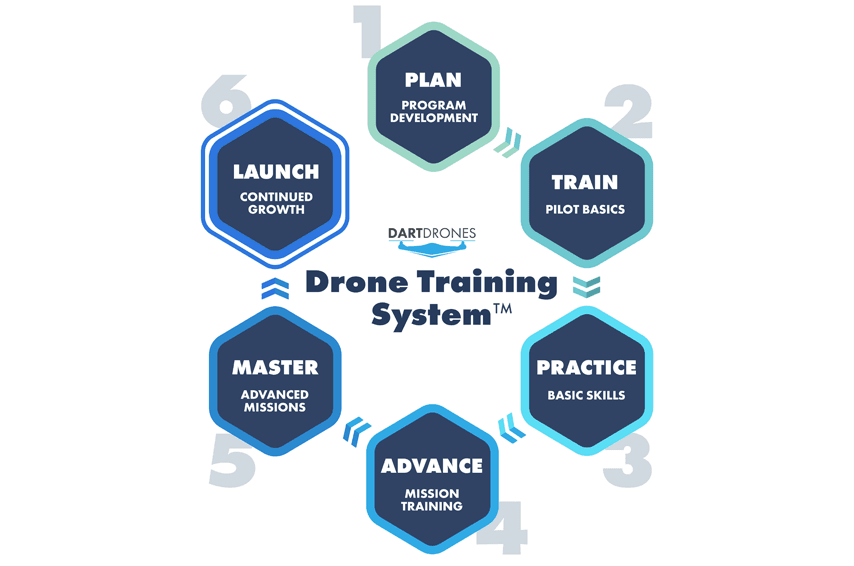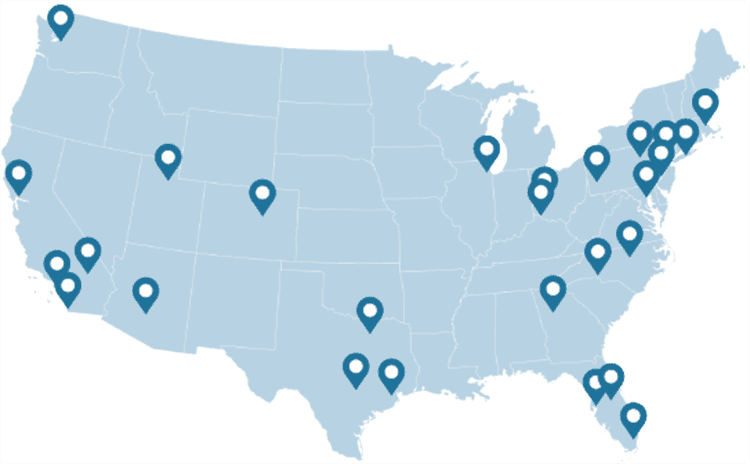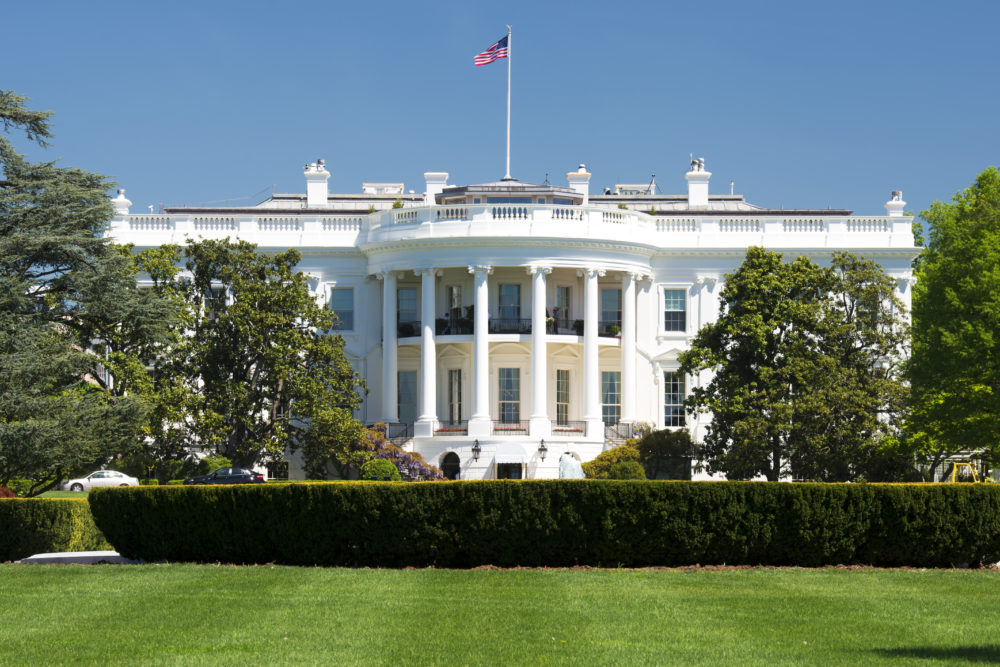
How FAA UAS Policy Could Be Affected By Trump’s Budget Cuts
While President Donald Trump’s budget proposal doesn’t specifically address drones, its funding priorities could affect drone owners, FAA UAS policy and drone businesses.
With President Trump’s proposed budget giving us a more precise peek at his legislative priorities, we have a clearer look at what the Trump administration practices will mean for the drone community. We now know the budget proposes cuts to the Federal Aviation Administration and there is a chance several FAA programs could become privatized.
Advocates in the industry see some positives and negatives with the budget when it comes to FAA UAS policy and the industry. One thing the experts agreed on is that the administration should continue to foster drone policy advances that occurred in 2016, with the introduction of the Part 107 exam.
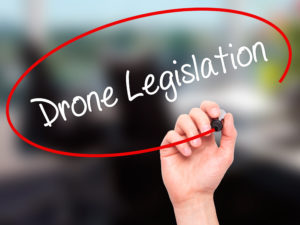 “It’s really important that we do not lose momentum on the focus that drones can be safely integrated into the airspace,” said Kara Calvert, executive director of the Drone Manufacturers Alliance. Safety is the big concern, she said, but economic factors are also important. “There are so many opportunities for economic growth.”
“It’s really important that we do not lose momentum on the focus that drones can be safely integrated into the airspace,” said Kara Calvert, executive director of the Drone Manufacturers Alliance. Safety is the big concern, she said, but economic factors are also important. “There are so many opportunities for economic growth.”
Trump’s budget for fiscal year 2018 calls for a 13 percent cut in funding for the Department of Transportation. The cuts could lead to the privatization of the FAA’s Air Traffic Control and NextGen program. NextGen is a series of initiatives designed to make the national airspace system more efficient.
Gretchen West, of the Drone Commercial Alliance, said one area of concern is cuts to the Federal Aviation Administration.
“Generally speaking, it could adversely affect the growth of the drone industry,” West said.
The FAA has many responsibilities when it comes to bringing UAS into the national airspace. It’s the department that oversees certification and waiver processes. It’s developing programs that will regulate drone usage. All of those tasks will require manpower and money.
West does have hope, however, for some of the privatization aspects that could come out of Trump’s budget. She wasn’t alone.
Richard Hanson, president of the Academy of Model Aeronautics, admits the FAA is stretched thin just managing the manned community. Hanson, who is a member of the Drone Advisory Committee, sees big opportunities with private-public partnerships moving forward. He said he would like to see more control in the hands of the drone community.
“Based on our experience, we know that a community-based approach has worked for years,” Hanson said. He believes the community lends itself to being able to handle the responsibility. For example, a group could take over administrating the Part 107 exams.
Hanson explained one group within the Drone Advisory Committee has been tasked with financial issues and budgetary needs. He said the group has looked at funding forces such as user fees, public-private partnerships, government allocations and more.
DARTdrones contacted the FAA for this story. The FAA wouldn’t comment specifically on the cuts, but offered its general statement:
“The Administration released its proposed fiscal year 2018 budget today. This high-level draft proposes a multi-year reauthorization plan to modernize the FAA and shift the air traffic control function to a non-governmental organization. The goal is to make the system more efficient and innovative without compromising our core mission of safety.
We are encouraged that the Administration is beginning the dialogue on the long-term needs of the FAA. The agency welcomes these conversations and we believe now is the right time to have a meaningful and thorough discussion about the best path for delivering air traffic services to a broad and innovative aviation community that continues to move forward.
We are proud of what we have accomplished at the FAA and look forward to contributing to the effort to modernize our system while remaining focused on our primary mission of safety.
The coming dialogue will ensure that our nation’s air traffic system safely accommodates the needs of today’s aviation industry while remaining flexible enough to seamlessly include future users. “
How Likely is the President’s Budget to Pass?
As it is? Not very likely. Let’s take a brief tour of the budget process. We’ll keep it simple. We promise.
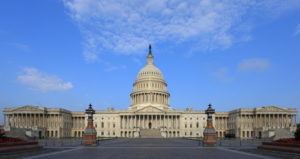 The federal government’s budget process is, of course, long, winding and unwieldy. And it has changed a lot over the years; but that’s another story for another website. We get a presidential budget proposal thanks to a law passed back when Babe Ruth was swatting home runs and the movies were still silent.
The federal government’s budget process is, of course, long, winding and unwieldy. And it has changed a lot over the years; but that’s another story for another website. We get a presidential budget proposal thanks to a law passed back when Babe Ruth was swatting home runs and the movies were still silent.
The Budget and Accounting Act of 1921 requires the president submit a proposed budget to Congress by the first Monday in February. Since President Trump, a Republican, took office after a Democrat, he had a bit of a Mulligan. Presidents in that situation can submit their budget after February starts.
The president’s budget then goes to committees in the House of Representatives and the Senate.
It’s important to remember at this point that the President doesn’t have the “power of the purse” in the United States. The Constitution gives that responsibility to the House of Representatives. The Senate and House can, and have, proposed independent budgets. Yes, we can end up with three competing budget proposals.
While the committees debate the presidential budget, the Congressional Budget Office analyses the president’s budget. It will produce several documents, including a “baseline” budget that projects revenues and spending. The office will project numbers for the current fiscal year as well as the ten upcoming fiscal years.
At that point, the House and Senate will offer budget resolutions. They might pass these resolutions, which will likely have amendments on them.
Got all that? Good. Guess what? We’re not done. Now we throw a wrench into the whole process.
Those budget resolutions aren’t binding. That’s right, they’re not actual laws. They’re more like guidelines.
The budget actually comes from the House Appropriations Committee and its dozen subcommittees. Therefore, they’re the big dog in the budget fight. After the budget resolutions pass, what essentially happens is the departments pitch their programs and the appropriations committee decides on what level their funds will be.
Are You Telling Me Trump’s Budget Doesn’t Mean Anything?
Not at all.
The president has the bully pulpit. He’s the leader of his party, which happens to hold both houses of Congress. His budget sets the agenda for federal spending. He’s like a basketball coach. A coach can decide which players are on the floor and decide which play to call, but he isn’t allowed to go out on the court, pick up the ball and pass it to whichever player he wants. But if the players don’t listen to his playcall and don’t score, the coach is probably going to pull them out of the game.
There’s almost no way his budget will come out of the House and Senate the way he sent it in. Representatives from either party whose districts would be challenged or hurt by Trump’s budget will fight for changes. But it’s unlikely, especially since his party is in power, that Trump’s recommendations won’t drive the budget.
How Do I Voice My Concerns on FAA UAS Policy?
This is a lot easier than you think.
First, you can contact your local U.S. Representative or both of your Senators. You have several options. Faxing, emailing and snail mail can help. Insiders say calling their local or Washington D.C. offices is more effective. You can also show up at their office or a town hall meeting.
“We always encourage contacting local government representative,” West said.
Your second option is to join an advocacy group like the Commercial Drone Alliance or the others mentioned above because they will work with legislators to advance your FAA UAS policy beliefs.
Whether you want to see more privatization or more government funds for the FAA, you have several options to voice your beliefs on public policy.
Patrick Abdalla is editor of DARTdrones. Contact him at [email protected]. He wrote this post on FAA UAS policy.




